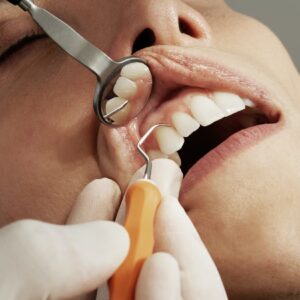Dental implant healing stages. The process of filling teeth can be a challenging one. Depending on your age, health, and diet, you may go through a series of healing stages. The first stage is called “in situ” or “native” healing. This means the filling material is placed directly into the patient’s natural dentition.
During this stage, the patient is free from any dental care and is not given pain medication during or after the procedure. The second stage of healing is “post-in situ” or “synovectomy”. This means the filling material is placed into a space normally occupied by the natural tooth structure. The space is usually created by the surgeon removing a natural tooth structure.

During this stage, the patient is given pain medication and must take regular breaks from their regular activities. The third stage of healing is “post-synovectomy”. This means the filling material is placed into a natural tooth structure that was not removed by the dentist.
What are the dental implant healing stages?
During the in-depth healing process, called “integrated rehabilitation”, there are five stages of healing: in-situ, post-in-situ, post-synovectomy, post-dental implant, and ultimate.
The in-situ stage is the most rapid, lasting about 6 weeks. This is followed by the post-in-situ stage which takes about 6 months to complete, and then comes the long post-synovectomy stage of about a year.
In the post-dental implant stage, the process is more or less the same as in the post-synovectomy stage, but the dental implant is healing for the rest of the person’s life.
The ultimate stage, which is the lengthiest, is the final stage of healing. It can take up to 4 years for the ultimate stage to complete, during which time some people experience a decrease in their dental health. This is due to collagen and other natural substances, including blood platelets, being released from the newly formed tooth structure. Dental implant healing stages
How long does the process take?
The entire process from start to finish, from placing a dental implant to the final stage of healing, takes between 6 and 8 months. During this time, the patient is on a low-key diet and takes minimal pain medication. The patient is encouraged to drink lots of water and soft drinks and take regular breaks from their regular activities.
During this period, the patient is monitored by the dentist, who can change the patient’s diet if necessary. This is because the patient is on a shellfish-free diet.
The exact timing of the various stages of dental implant healing will vary from person to person, depending on the individual’s age, health, and diet, as well as the type of tooth structure being replaced.
People who have had partial dentistry, or teeth whitening, may go through a faster healing stage, called “post-dental implant”, during which time they have fewer teeth to replace. This is due to the advanced state of healing and the fact that partial dentistry is performed on these patients more often.
How is the procedure performed?
When a patient is accepted for dental implant surgery, they are randomly assigned to one of two groups. The first group goes through a “pre-implant” stage during which they are put through a mock procedure to familiarize them with the procedure. The second group goes through a “post-implant” stage which is more like a post-op procedure, during which time the patient is on general anesthetic.
During the pre-implant stage, a patient’s teeth are either straightened or extracted, so that the space available for the dental implant can be used better. This stage is useful for people who want to get an idea of how the procedure will feel.
In the post-implant stage, the implants are prepared. A special tool is placed under the dental implant to create a strong bond between the implant and the patient’s tooth. This stage is necessary because the bond created between the implant and the tooth is weaker than normal. Once the stage is complete, the dentist places the dental implant in the mouth, after which the patient is asleep or under the care of medical personnel until the final stage of healing, which takes about a year.
What to expect during the process
In the first two stages of dental implant healing, called “in-situ” or “native” healing, the patient’s teeth are fully developed and in place. The third stage, called “post-in-situ” or “synovectomy”, is when the procedure is performed. During this stage, a tooth is usually extracted to provide more space for the dental implant. Dental implant healing stages
In the post-synovectomy or “post-dental implant” stage, the patient is awake and under the care of medical personnel. The medical personnel helps the patient to identify and mark the teeth to be replaced. The dental staff then prepares the teeth for replacement. Once the dental staff is finished, the patient is allowed to go home.
What to expect during the recovery process?
Recovery from dental implants is similar to any other type of surgery. You will be on general anesthetic most of the time, so you won’t be able to feel any of the effects of the surgery or the anesthetic itself. You may also experience some lightheadedness while under the anesthesia, which is normal and expected. Your muscle and tissue spasms will also slow down, so you may experience some mild pain during this stage.
In the ultimate stage of healing, which can take up to 4 years, your dental implants will be completely healed. You will then need to follow the normal brushing and flossing schedule, as well as have regular dental checkups. Read Also How to Get a Dental Implant and How to Use It
Side Effects of Dental Implant Surgery
Like all surgeries, dental implant surgery has side effects. The most common side effects are similar to any surgery, including mild to moderate pain, loss of appetite, and leg cramps.
Additionally, because the deposition of calcium, hydroxyapatite, and collagen is triggered by dental environment and diet, vitamin D, omega-3 fatty acids, and flaxseed oil are needed for the body to build a stronger tooth structure.
If one of these nutrients is deficient, or if the person is on a low-fibers diet, then the healing process may be delayed or impaired.
How to speed up the healing process
Here are some tips to speed up the healing process:
- Increase the amount of water and soft drinks consumed by the patient.
- Add baking soda to your water to mask the taste and odor of the air.
- Add lemon or orange soda to mask the smell of the air.
- Use natural sugars like glucose, honey, and brown rice syrup.
- Keep fruits and vegetables at home. They are usually a good source of fiber and vitamins.
- Eat fish and seafood at least two times a week.
- Consume nuts and seeds. Brazil nuts and sunflower seeds are great for the skin.
- Eat fish at least two times a week.
- Try to get your 5-a-day throughout the day.
- Don’t miss any meals.
- Don’t eat anything after 8pm.
- Drink plenty of water and soft drinks.






